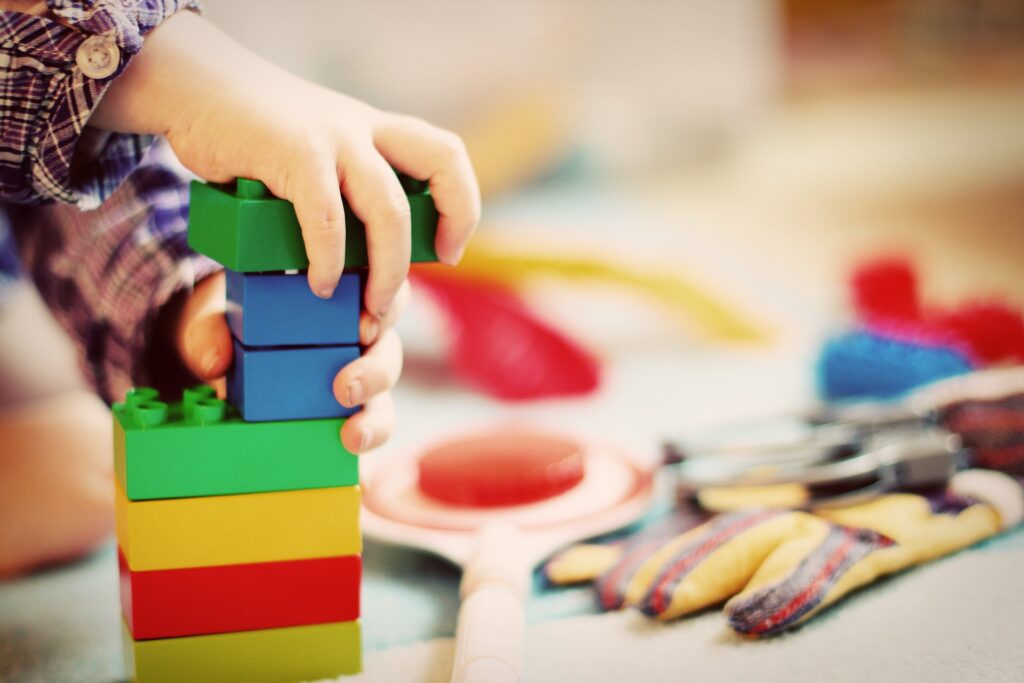Children’s toys have been created since we discovered our own opposable thumbs. Of course, as with everything else, toys have changed plenty over the years. No longer is straw sticking out of the garments of our dolls, and roll tops are considered severely outdated
So we have gathered together the history of toys, along with projections of the future, to look at the evolution of toys. As Christmas quickly approaches, we want to help you understand what the little ones in your life will be happy to see under the Christmas tree and what they will keep playing with. After all, there’s nothing more frustrating than a toy gathering dust right after it’s taken out of the box.
We will also look specifically at toys that children can engage with to improve their motor skills, critical thinking and more. Stimulating toys can set kids up for success later in life, so these are some of the best toys to buy. But first, let’s look at the evolution of toys.

Evolution of Toys
The first toys made by man date all the way back to around 4000 B.C. They were made out of found natural materials, like rocks, sticks and animal bones. These natural materials gave way to plastic in the 19th century. From this point on, children’s toys have evolved quickly. New technologies led to the invention of video game consoles, talking toys, brighter colours and more, changing the way that children play forever.
So let’s take a look at the evolution of toys across the last fifty years and the trends that emerging now:
’80s Toy Trends
Lego, Barbie and Hot Wheels had already been around for decades at this point, so the focus of this particular decade was different. Hungry Hippos, Lego train sets, Cabbage Patch Dolls, Strawberry Shortcake and the Rubix Cube all really defined this iconic toy decade. The Rubix Cube, though invented in the ’70s, took the world by storm in the ’80s and still hasn’t relinquished its hold.
’90s Toy Trends
The 90s brought with it the Furby, Game Boy and Power Rangers and Teenage Mutant Hero Turtles action figures. Soft toys were led by Furby, and hard plastic rose in importance with the action figures. Technology was also becoming increasingly important at this point in time, as the Game Boy clearly shows. Technology was also used in soft toys, with the Furby becoming so popular because of its unique interactive abilities.
2000s Toy Trends
The turning of the millennium brought a new age of digital technology, which was heavily reflected in the toy trends for this decade. In technological games, the Xbox, Playstation games and Nintendo Wii led the game. The 2000s were also known for the Bratz Dolls, BMX bike, and the Who Wants To Be a Millionaire board game. STEM toys, which focus on Science, Technology, Engineering and Maths, also rose in popularity, particularly with parents.
2010s Toy Trends
2010s trends are defined by technology. With more children interacting with touch screens than traditional toys, this was the decade where toys became educational tools. Digital literacy is important for everyone in this day and age, and starting children out young is a good idea. For this reason, mobile phones, Playstations, Xboxes, Nintendo and the Apple iPad have grown in popularity. These toys can be both basic and advanced, and they help kids focus on developing their science, technology, engineering and math skills.
New Toy Trends
Now that we have quickly looked at toys then and now, we can focus on the now. Technology still leads the way with toy trends. How has technology changed the toy industry over the past ten years, you ask? 3D printing, artificial intelligence, and augmented reality are now moulding what new toys are being made and how we interact with them.
That said, there has also recently been an increase in the sales of traditional, tactile toys. This stems from the perceived need to move children away from the all-absorbing touch screen and instantly gratifying technological toys.
As we have seen in a number of emerging trends beyond toys, nostalgia and ‘retro’ is common, with trends from decades past coming back into fashion. We expect to see this in the toy industry, too, with toymakers reimaging beloved toys of the past for the new generation.
What Toys Should I Buy This Christmas?
If you are looking at toys then and now to discover what you should buy for the little one in your life, Oxbridge recommends Lego. Lego is predicted to be the most popular educational Christmas toy for kids, indicating that its popularity is simply unbeatable.
Projections show that skateboards and Furby toys will also be on children's wish lists this year.
Oxbridge also recommends not buying toys that have screens this year. Screens, while potentially beneficial from a learning standpoint, should only be used for a limited time period every day. Experts advocate limiting screen time for young children, so we do not recommend putting an iPad under the tree, even if it can contain a plethora of learning games.
